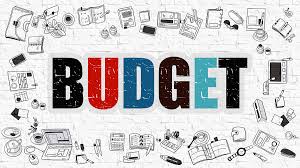Have you experienced a life change recently like having a baby or getting a new house or job? It may be time to review your life insurance coverage! Click the image below to easily find out just how much coverage you should have!



Have you experienced a life change recently like having a baby or getting a new house or job? It may be time to review your life insurance coverage! Click the image below to easily find out just how much coverage you should have!



The first step in investing is defining your dreams for the future. If you are married or in a long-term relationship, spend some time together discussing your joint and individual goals. It’s best to be as specific as possible. For instance, you may know you want to retire, but when? If you want to send your child to college, does that mean an Ivy League school or the community college down the street?
You’ll end up with a list of goals. Some of these goals will be long term (you have more than 15 years to plan), some will be short term (5 years or less to plan), and some will be intermediate (between 5 and 15 years to plan). You can then decide how much money you’ll need to accumulate and which investments can best help you meet your goals. Remember that there can be no guarantee that any investment strategy will be successful and that all investing involves risk, including the possible loss of principal.
After a hard day at the office, do you ask, “Is it time to retire yet?” Retirement may seem a long way off, but it’s never too early to start planning — especially if you want your retirement to be a secure one. The sooner you start, the more ability you have to let time do some of the work of making your money grow.
Let’s say that your goal is to retire at age 65 with $500,000 in your retirement fund. At age 25 you decide to begin contributing $250 per month to your company’s 401(k) plan. If your investment earns 6 percent per year, compounded monthly, you would have more than $500,000 in your 401(k) account when you retire. (This is a hypothetical example, of course, and does not represent the results of any specific investment.)
But what would happen if you left things to chance instead? Let’s say you wait until you’re 35 to begin investing. Assuming you contributed the same amount to your 401(k) and the rate of return on your investment dollars was the same, you would end up with only about half the amount in the first example. Though it’s never too late to start working toward your goals, as you can see, early decisions can have enormous consequences later on.
Some other points to keep in mind as you’re planning your retirement saving and investing strategy:
Whether you’re saving for a child’s education or planning to return to school yourself, paying tuition costs definitely requires forethought — and the sooner the better. With college costs typically rising faster than the rate of inflation, getting an early start and understanding how to use tax advantages and investment strategy to make the most of your savings can make an enormous difference in reducing or eliminating any post-graduation debt burden. The more time you have before you need the money, the more you’re able to take advantage of compounding to build a substantial college fund. With a longer investment time frame and a tolerance for some risk, you might also be willing to put some of your money into investments that offer the potential for growth.
Consider these tips as well:
At some point, you’ll probably want to buy a home, a car, maybe even that yacht that you’ve always wanted. Although they’re hardly impulse items, large purchases often have a shorter time frame than other financial goals; one to five years is common.
Because you don’t have much time to invest, you’ll have to budget your investment dollars wisely. Rather than choosing growth investments, you may want to put your money into less volatile, highly liquid investments that have some potential for growth, but that offer you quick and easy access to your money should you need it.

If withdrawals are used for purposes other than qualified education expenses, the earnings will be subject to a 10% federal tax penalty in addition to federal and, if applicable, state income tax. States take different approaches to the income tax treatment of withdrawals.
Tips: Participants can use their CollegeAmerica account for undergraduate and graduate school as well as specialized programs, such as medical or law school.
Education expenses can include tuition for an elementary or secondary private school or religious school, up to a maximum of $10,000 incurred during the taxable year per beneficiary. Home school expenses are not considered a qualified education expense.
Note: Withdrawals for K–12 expenses may not be exempt from state tax in certain states. Please consult your tax advisor for state-specific details.
For distributions made after December 31, 2018, qualified expenses required for participation in an apprenticeship program registered and certified with the Secretary of Labor under Section 1 of the National Apprenticeship Act include:
Nonqualified distributions are made to pay for ineligible expenses. When an account owner makes a nonqualified distribution:
Earnings on a distribution due to one of the following events are subject to federal income tax but not the 10% penalty:
Contact us today to schedule a free consultation and learn more about how you can set aside money for college!

Protecting the Future
Real Life Stories: Stephen Miller
A mutual friend with a new dog brought Stephen and Katie together. Stephen had headed to his friend’s house to meet the new furry member of the family, and when he got there, he saw Katie playing with dog in the backyard. “Katie was so outgoing,” says Stephen. “She was the nicest person you’ll ever meet.”
That first meeting led to beach outings and concerts, and over time to getting married and thinking about starting a family. It was Katie who suggested they get life insurance. Stephen admits he wasn’t too happy about the idea. They were young and healthy, so he didn’t see the point. Katie, however, convinced him to sit down with insurance professional Rose Goheen, who walked them through the process and presented them with affordable options.
They both decided to get life insurance coverage.
A Growing Family
When the couple welcomed Chase, they decided to reevaluate their life insurance. Given their expanding family and responsibilities, they both bought additional life insurance.
It was during her recovery from giving birth to Reid that Katie realized something was wrong. Her doctor confirmed her suspicion that the abdominal lump she felt was something much more serious. In fact, it was an aggressive form of cancer. Katie, with the love and support of her family, valiantly fought the disease, but just over a year later it claimed this young mom’s life.
She was just 30.
No words can capture the devastation that Stephen and his boys felt at Katie’s loss. “It’s horrible to lose your soul mate and best friend,” he says. “But I have two boys to support, and I want them to know their dad can carry on.”
Life insurance has helped with that process.
“Nothing can bring Katie back, but having life insurance meant we didn’t lose everything,” he says. “I don’t earn enough alone to afford living in our house. Life insurance has eased my financial worries on so many levels.”
Thinking back to that first meeting with Rose, Stephen says: “Katie was the smarter one. She knew to plan for the future—our future—with life insurance.”

What financial, business, or life priorities do you need to address for the coming year? Now is an excellent time to think about the investing, saving, or budgeting methods you could employ toward specific objectives, from building your retirement fund to managing your taxes. You have plenty of choices. Here are a few ideas to consider:
Can you contribute more to your retirement plans this year? In 2021, the contribution limit for a Roth or traditional individual retirement account (IRA) is expected to remain at $6,000 ($7,000 for those making “catch-up” contributions). Your modified adjusted gross income (MAGI) may affect how much you can put into a Roth IRA. With a traditional IRA, you can contribute if you (or your spouse if filing jointly) have taxable compensation, but income limits are one factor in determining whether the contribution is tax-deductible.1
Remember, withdrawals from traditional IRAs are taxed as ordinary income, and if taken before age 59½, may be subject to a 10% federal income tax penalty starting again in 2021. Roth IRA distributions must meet a five-year holding requirement and occur after age 59½ to qualify for tax-exempt and penalty-free withdrawal. Tax-free and penalty-free withdrawals from Roth IRAs can also be taken under certain other circumstances, such as a result of the owner’s death.2
Keep in mind, this article is for informational purposes only, and not a replacement for real-life advice. Also, tax rules are constantly changing, and there is no guarantee that the tax landscape will remain the same in years ahead.
Make a charitable gift. You can claim the deduction on your tax return, provided you follow the Internal Review Service (I.R.S.) guidelines and itemize your deductions with Schedule A. The paper trail is important here. If you give cash, you should consider documenting it. Some contributions can be demonstrated by a bank record, payroll deduction record, credit card statement, or written communication from the charity with the date and amount. Incidentally, the I.R.S. does not equate a pledge with a donation. If you pledge $2,000 to a charity this year but only end up gifting $500, you can only deduct $500.3
These are hypothetical examples and are not a replacement for real-life advice. Make certain to consult your tax, legal, or accounting professional before modifying your record-keeping approach or your strategy for making charitable gifts.
See if you can take a home office deduction for your small business. If you are a small-business owner, you may want to investigate this. You may be able to write off expenses linked to the portion of your home used to conduct your business. Using your home office as a business expense involves a complex set of tax rules and regulations. Before moving forward, consider working with a professional who is familiar with home-based businesses.4
Open an HSA. A Health Savings Account (HSA) works a bit like your workplace retirement account. There are also some HSA rules and limitations to consider. You are limited to a $3,600 contribution for 2021 if you are single; $7,200 if you have a spouse or family. Those limits jump by a $1,000 “catch-up” limit for each person in the household over age 55.5
If you spend your HSA funds for non-medical expenses before age 65, you may be required to pay ordinary income tax as well as a 20% penalty. After age 65, you may be required to pay ordinary income taxes on HSA funds used for nonmedical expenses. HSA contributions are exempt from federal income tax; however, they are not exempt from state taxes in certain states.
Pay attention to asset location. Tax-efficient asset location is one factor that can be considered when creating an investment strategy.
Review your withholding status. Should it be adjusted due to any of the following factors?
* You tend to pay the federal or state government at the end of each year.
* You tend to get a federal tax refund each year.
* You recently married or divorced.
* You have a new job, and your earnings have been adjusted.
These are general guidelines and are not a replacement for real-life advice. Make certain to consult your tax, human resources, or accounting professional before modifying your withholding status.
Did you get married in 2020? If so, it may be an excellent time to consider reviewing the beneficiaries of your retirement accounts and other assets. The same goes for your insurance coverage. If you are preparing to have a new last name in 2021, you may want to get a new Social Security card. Additionally, retirement accounts may need to be revised or adjusted?
Are you coming home from active duty? If so, go ahead and check on the status of your credit and any tax and legal proceedings that might have been preempted by your orders.
Consider the tax impact of any upcoming transactions. Are you planning to sell any real estate this year? Are you starting a business? Might any commissions or bonuses come your way in 2021? Do you anticipate selling an investment that is held outside of a tax-deferred account?
If you are retired and in your seventies, remember your RMDs. In other words, Required Minimum Distributions (RMDs) from retirement accounts. Under the SECURE ACT, in most circumstances, once you reach age 72, you must begin taking RMDs from most types of these accounts.6
Vow to focus on your overall health and practice sound financial habits in 2021. And don’t be afraid to ask for help from professionals who understand your individual situation.

A Roth IRA’s Many Benefits
Why do so many people choose them over traditional IRAs?
Provided by Traci Kovacic
The IRA that changed the whole retirement savings perspective. Since the Roth IRA was introduced in 1998, its popularity has soared. It has become a fixture in many retirement planning strategies because it offers savers so many potential advantages.
The key argument for going Roth can be summed up in a sentence: Paying taxes on your retirement contributions today may be better than paying taxes on your retirement savings tomorrow.
Think about it. Would you rather pay taxes today or wait 10 years and see where the tax rates end up? With that in question in mind, here are some of the potential benefits associated with opening and contributing to a Roth IRA.
What you see is what you get. Roth IRA contributions are made with after-tax dollars, and any potential earnings on investments within a Roth IRA are NOT subject to income tax or included in the account owner’s income. Instead, they accumulate on a tax-deferred basis and are tax-free when withdrawn from the Roth if the distribution is qualified.1
You can arrange tax-free retirement income. Roth IRA earnings can be withdrawn tax-free as long as you are 59½ or older and have owned the account for at least 5 years. The IRS calls such tax-free withdrawals qualified distributions.2
Withdrawals don’t affect taxation of Social Security benefits. If your provisional income is between $25,000 and $34,000 — or $32,000 and $44,000 for joint filers — then your Social Security benefits may be taxed if you take withdrawals before your full retirement age. Luckily, a qualified distribution from a Roth IRA doesn’t count as taxable income, which may be a means of avoiding taxation on your social security benefit.3,4
You have until your tax-filing deadline to make a Roth IRA contribution for a given tax year. For example, IRA contributions for the 2020 tax year may be made up until April 15, 2021. While April 15 is the annual deadline, many IRA owners who make lump sum contributions for a given tax year make them as soon as that year begins, not in the following year. Making your Roth IRA contributions earlier gives the funds in the account more time to potentially grow. Remember, though that Roth IRA contributions cannot be made by taxpayers with high incomes. In 2020, the income phaseout limit was $139,000 for single filers and $206,000 for married couples who file jointly.5
Who can open a Roth IRA? Anyone with earned income (and that includes a minor).
How much can you contribute to a Roth IRA annually? The combined annual contribution limit to all of your traditional and Roth IRAs is $6,000 for 2019 and 2020 ($7,000 if you’re age 50 or older), but income limits may reduce or eliminate your ability to contribute. To sweeten the deal even further, you can keep making annual Roth IRA contributions all your life.6
All this may have you thinking about opening up a Roth IRA. A chat with the financial professional you know and trust may help you evaluate whether a Roth IRA is right for you, given your particular tax situation and retirement horizon.


Provided by Traci Kovacic
Traditional Individual Retirement Accounts (IRA), which were created in 1974, are owned by roughly 33.2 million U.S. households. Roth IRAs, however, were created as part of the Taxpayer Relief Act in 1997, are owned by nearly 22.5 million households.1
Both are IRAs. And yet, each is quite different.
Know the limits. Up to certain limits, Traditional IRAs allow individuals to make tax-deductible contributions into the account. Distributions from traditional IRAs at retirement are taxed as ordinary income, and if taken before age 59½, may be subject to a 10-percent federal income tax penalty. Remember, under the SECURE Act, in most circumstances, once you reach age 72, you must begin taking required minimum distributions from a Traditional Individual Retirement Account (IRA). Additionally, you may continue to contribute to a Traditional IRA past age 70½, under the SECURE Act, as long as you meet the earned-income requirement.
Filing single. For singles, the maximum tax-deductible contribution starts shrinking once your modified adjusted gross income (MAGI) reaches $65,000. Singles with adjusted incomes of $75,000 and above are not eligible for a tax deduction.2
Filing jointly. For those who are married and filing jointly, things are a bit more complicated. If you or your spouse makes an IRA contribution that is covered by a workplace retirement plan, the deduction begins phasing out when your adjusted gross income is at $104,000, and it disappears at $124,000. However, if you do not have a workplace plan, but your spouse does (or vice versa), the 2020 limit starts at $196,000, and no tax deduction is allowed once the contributor’s income reaches $206,000.
Also, within certain limits, individuals can make contributions to a Roth IRA with after-tax dollars and then qualify for tax-free and penalty-free withdrawals at retirement. Roth IRA distributions must meet a five-year holding requirement and occur after age 59½.3
Income impacts total contributions. Like a traditional IRA, contributions to a Roth IRA are limited based on income. For 2020, contributions to a Roth IRA are phased out between $196,000 and $206,000 for married couples filing jointly and between $124,000 and $139,000 for single filers.
Contribution limits. In addition to distribution rules, there are limits on how much can be contributed each year to either IRA. In fact, these limits apply to any combination of IRAs; that is, workers cannot put more than $6,000 per year into their Roth and traditional IRAs, combined. So, if a worker contributed $3,500 in a given year into a traditional IRA, their contributions to a Roth IRA would be limited to $2,500 during that same year.4
Catch-up contributions. Individuals who reach age 50 or older by the end of the tax year can qualify for “catch-up” contributions. The combined limit for these is $7,000.5
Let’s chat. When it comes to picking an IRA, both traditional and Roth IRAs may play an important role in your retirement strategy. If you have any questions, let’s chat soon about how these products may be a good fit for your goals.

Budgeting towards needs and goals. One of the objectives of creating a household budget is that, as time moves on and the various household members advance in their careers, they are likely to make more money. Knowing where that money goes can help direct that money to not only meet your day-to-day needs but also to potentially realize your financial goals. Rent payments may become mortgage payments, and socking away a few bucks into your savings each payday could change into an effective financial strategy involving various investment tools.1
Remember that investing involves risk, and the return and principal value of investments will fluctuate as market conditions change. Investment opportunities should take into consideration your goals, time horizon, and risk tolerance. When sold, investments may be worth more or less than their original cost. Past performance does not guarantee future results.
The back of an envelope or a spreadsheet app. Traditionally, a household budget could be worked out “on the back of an envelope.” Of course, this is still true, though you may have access to more bells and whistles than previous generations. Whether you prefer to work it out with pencil and paper or by computer, the main rule is to create and stick to the budget.
Easy come, easy go. Start by taking note of your income. Some Americans have more than one income source, either through a second gig or even a hobby turned small business. You don’t have to be making money very long, though, to realize that it doesn’t always sit still in your checking account. Along with your income, tally up your expenditures: Housing costs (rent, utilities, etc.), groceries, student loan payments, transportation expenses, phone, and Internet, as well as entertainment. It adds up! (More like subtracts, actually.)
Make adjustments. Ideally, the number at the bottom of this reckoning should be a positive number. This means that you’re living within your means and, while you may want to make that a larger number by adjusting your expenses, you’re at a good starting point.
Adjustments are probably overdue if you have a negative number; you’ll need to take a cold hard look at those expenses and think about can I live without (such as mountaineering lessons) and what isn’t going to give (the essentials: food and shelter).
Your other choice, of course, is to make more money. As you move on in your career, this will likely happen as you earn salary increases or build your business. Don’t forget, though, that life gets more expensive over time, as well. Rents and fees will rise as time goes on. Regular adjustments are a natural part of good budgetary maintenance.
Goals and strategies. If you have money coming in that is not being gobbled up by line items on your budget, and you stick to it and keep it that way, you’re (literally) coming out ahead. Now’s the time to put that money to work toward goals and strategies. Goals can be small, like saving up for a vacation or upgrading an item in your home. Or they can be larger, like saving for a major expense.
Goals can work side-by-side with financial strategies, which tend to be “bigger picture” in scope. Financial strategies tend to be things like looking ahead to your retirement or investing in creating more income (so you can get back to mountain climbing). For these bigger strategies and the shorter-term goals, there is an advantage to seeking out a financial professional geared toward helping you get the most from your efforts.
There is no “one way” to budget. There isn’t a single, one-size-fits-all solution for creating and maintaining a household budget. Financial professionals also know this and can help craft a strategy suited to your risk tolerance, goals, and financial situation.